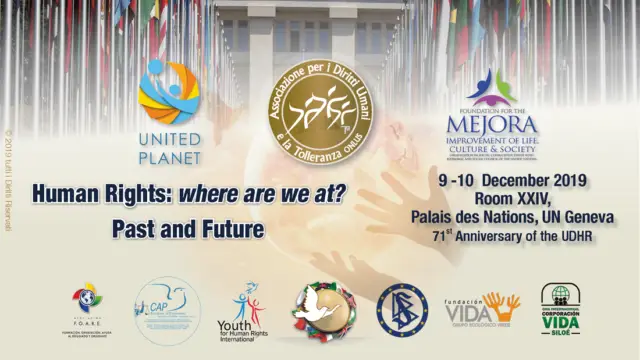The Universal Declaration of Human Rights (UDHR) is a declaratory document adopted by the General Assembly of the United Nations in its Resolution 217 A (III), on December 10, 1948, in Paris; In it, 30 human rights considered basic are collected in its 30 articles, of the San Francisco Charter (June 26, 1945).

The union of this declaration and the International Covenants on Human Rights and its protocols includes what has been called the International Charter of Human Rights. While the Declaration generally constitutes an orientation document, the Covenants are international treaties that oblige the signatory States to comply with them.
Its History
In the slow evolution of human rights in history, it is from the seventeenth century when explicit statements begin to be contemplated based on the contemporary idea of “natural law”. England incorporated the Habeas Corpus Act and the Bill of Rights (Bill of Rights) into its constitution in 1689. In France as a result of the French Revolution, the Declaration of Rights of Man and Citizen in 1798. In 1927, the Slavery Convention enters into force, which prohibits slavery in all its forms. The so-called “Mechelen Codes” covering international morals (1937), social relations (1927), family relations (1951) and the code of Political Morality (1957) are partial attempts of the public conscience to regulate minimum security of respect for the individual, usually ignored by the States.
As a result of World War I, the League of Nations promoted the Geneva Conventions on security, respect and minimum rights of prisoners of war, and in 1948 after World War II, the United Nations General Assembly approved the document entitled “Universal Declaration of Human Rights”, as a set of rules and principles, to guarantee of the person against public authorities.
Elaboration process

Under Article 68 of the Charter of the United Nations, the Economic and Social Council of the United Nations created the Commission on Human Rights. This body, made up of eighteen representatives of UN member states, was entrusted with the development of a series of instruments for the defense of human rights. Within the Commission, a committee formed by eight members was created, which included Eleanor Roosevelt (United States), René Cassin (France), Charles Malik (Lebanon), Peng Chun Chang (China), Hernán Santa Cruz (Chile), Alexandre Bogomolov / Alexei Pavlov (Soviet Union), Lord Dukeston / Geoffrey Wilson (United Kingdom) and William Hodgson (Australia). The intervention of John Peters Humphrey of Canada, director of the UN Human Rights Division, was also of special relevance.
The draft Declaration was put to the vote on December 10, 1948, in Paris, and was approved, by what were then the 58 member states of the UN General Assembly, with 48 votes in favor and the 8 abstentions of the Union Soviet, from the countries of Eastern Europe, Saudi Arabia, and South Africa. Besides, two other member countries were not present at the vote.
South African abstention can be seen as an attempt to protect its apartheid system, which violated several principles of the declaration. The abstention of the Saudi delegation was mainly due to its disagreement with two articles: 16 (marriage without discrimination and with the consent of the spouses) and 18 (right to change religion). Abstentions of communist nations focused on the fact that the declaration did not specifically condemn fascism and Nazism, however, Eleanor Roosevelt attributed that abstention to disagreement with article 13 (right to leave the country freely).
Structure and contents
The Universal Declaration of Human Rights (UDHR) is composed of a preamble and thirty articles, which include civil, political, social, economic and cultural rights.
Importance of the declaration
Although it is not a mandatory or binding document for the States, it served as the basis for the creation of the two international conventions of the UN, the International Covenant on Civil and Political Rights and the International Covenant on Economic, Social and Cultural Rights, covenants that were adopted by the General Assembly of the United Nations in its resolution 2200 A (XXI), of December 16, 1966.
It is still widely cited by university professors, defense lawyers, and constitutional courts. Likewise, the text acquires constitutional rank in some countries, internationalist lawyers continually debate which of their stipulations can be said to constitute customary international law. Opinions vary greatly in this regard and are questioned from some stipulations to the entire document. According to the Guinness Book of Records, the “UDHR” is the document translated into more languages in the world (as of 2014 it had been translated into more than 330 languages).

